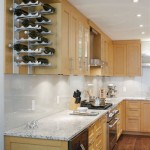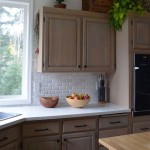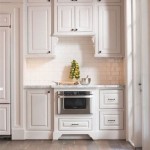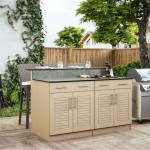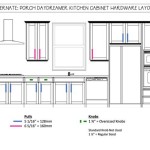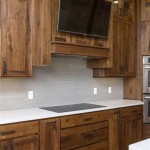How to Build Custom Cabinets for Your Laundry Room
A well-organized laundry room can transform a chore into a more efficient and enjoyable experience. Custom cabinets offer a tailored solution to maximize space and functionality in this often-overlooked area. Building your own laundry room cabinets allows you to design them specifically for your needs, creating a space that is both aesthetically pleasing and practical. This guide provides a comprehensive step-by-step process for crafting custom cabinets that will elevate your laundry room to new levels of organization.
Step 1: Planning and Design
Before embarking on construction, meticulous planning is crucial to ensure your custom cabinets seamlessly integrate with your laundry room's layout and meet your specific storage requirements. Consider the following factors:
1. Space Allocation: Carefully measure the available space where the cabinets will be installed. Determine the dimensions, including height, width, and depth, of the desired cabinetry. 2. Functionality: Identify the specific storage needs you want to address. Do you require ample hanging space for clothes, shelves for folded laundry, or dedicated drawers for cleaning supplies? 3. Style and Materials: Decide on the aesthetic you wish to achieve for your laundry room cabinets. Choose materials that complement the overall style, such as wood, laminate, or painted finishes. Consider durability and moisture resistance, especially in a humid environment like a laundry room. 4. Budgeting: Establish a realistic budget for the project, taking into account the cost of materials, tools, and any potential professional assistance.
Step 2: Materials and Tools
Once the design is finalized, gather the necessary materials and tools for construction. The following list provides a comprehensive overview:
Materials:
*Cabinetry Materials:
Plywood, MDF (medium-density fiberboard), or solid wood, based on your style and budget. *Hardware:
Hinges, drawer slides, knobs, and pulls. *Shelving:
Wood or wire shelving, depending on your preference. *Cutting Materials:
Stain, paint, and finishing materials, as desired.Tools:
*Measuring Tape:
Essential for accurate measurements. *Circular Saw:
For cutting plywood or MDF. *Jigsaw:
For intricate cuts and curves. *Power Drill:
For drilling pilot holes and attaching hardware. *Screwdriver:
For driving screws and attaching components. *Clamps:
For securing pieces during assembly. *Level:
For ensuring cabinets are plumb and level. *Sandpaper:
For smoothing edges and preparing surfaces. *Safety Gear:
Eye protection, gloves, and hearing protection.Step 3: Cabinet Construction
With materials and tools gathered, you can begin constructing the cabinets. The following steps provide a general guide for building a basic cabinet:
1. Cut Components:** Based on your design, carefully cut the cabinet sides, top, bottom, and shelves to the desired dimensions.
2. Assemble the Cabinet Box:** Using wood glue and screws, join the cabinet sides, top, and bottom to create a rectangular frame. Ensure that all corners are square and securely fastened.
3. Install Shelves and Drawer Slides:** According to your design, attach shelves using shelf pins or brackets. If incorporating drawers, install drawer slides along the sides of the cabinet.
4. Attach Doors and Hardware:** Install door hinges on the cabinet box and attach the doors. Ensure the doors align properly and close smoothly. Mount knobs or pulls for easy access.
5. Finish and Install:** Apply stain, paint, or other desired finishes to enhance the look and durability of the cabinets. Once dry, install the cabinets securely to the wall using appropriate hardware.
Beyond the basic cabinet construction, you can add customization and features to enhance functionality and style. Consider the following: After construction, prioritize safety and maintenance to ensure the longevity of your custom cabinets. Consider the following: By following these steps and incorporating your desired customizations, you can transform your laundry room into a well-organized and aesthetically pleasing space. Building custom cabinets allows you to create a solution that perfectly meets your needs and elevates the functionality of this often-overlooked area.Step 4: Customization and Additional Features
Pull-out Drawers:
Incorporate pull-out drawers for organizing smaller items, such as cleaning supplies.
* Dividers:
Install shelf dividers to create compartments for different items, such as folded laundry.
* Lighting:
Install LED lights under cabinets or inside drawers for better visibility.
* Countertop:
Create a work surface with a countertop made of laminate, granite, or other desired materials.
* Backsplash:
Add a backsplash behind the countertop to protect the walls and create a visually appealing element.
Step 5: Safety and Maintenance
Secure Installation:
Install cabinets securely to the wall using appropriate hardware to prevent tipping.
* Proper Ventilation:
Ensure adequate ventilation in the laundry room to minimize moisture buildup and prevent damage to cabinets.
* Regular Cleaning:
Wipe down cabinets regularly with a damp cloth to remove dust and prevent buildup.
* Hardware Maintenance:
Periodically inspect and lubricate hinges and drawer slides for smooth operation.

Diy Laundry Room Cabinets Kristen De Makeover

Diy Laundry Room Cabinets Kristen De Makeover

Diy Laundry Room Cabinets Kristen De Makeover

Diy Laundry Room Cabinets Kristen De Makeover

Budget Laundry Room Cabinet Plans Her Tool Belt

3 Laundry Room Designs Made With Semihandmade S

7 Tips For Creating A Functional Laundry Room Wolf Home S

How To Create A Beautiful Space With Laundry Room Cabinets

How To Make Your Laundry Room Both Beautiful And Functional Plank Pillow

Laundry Room Diy Elpetersondesign
Related Posts



